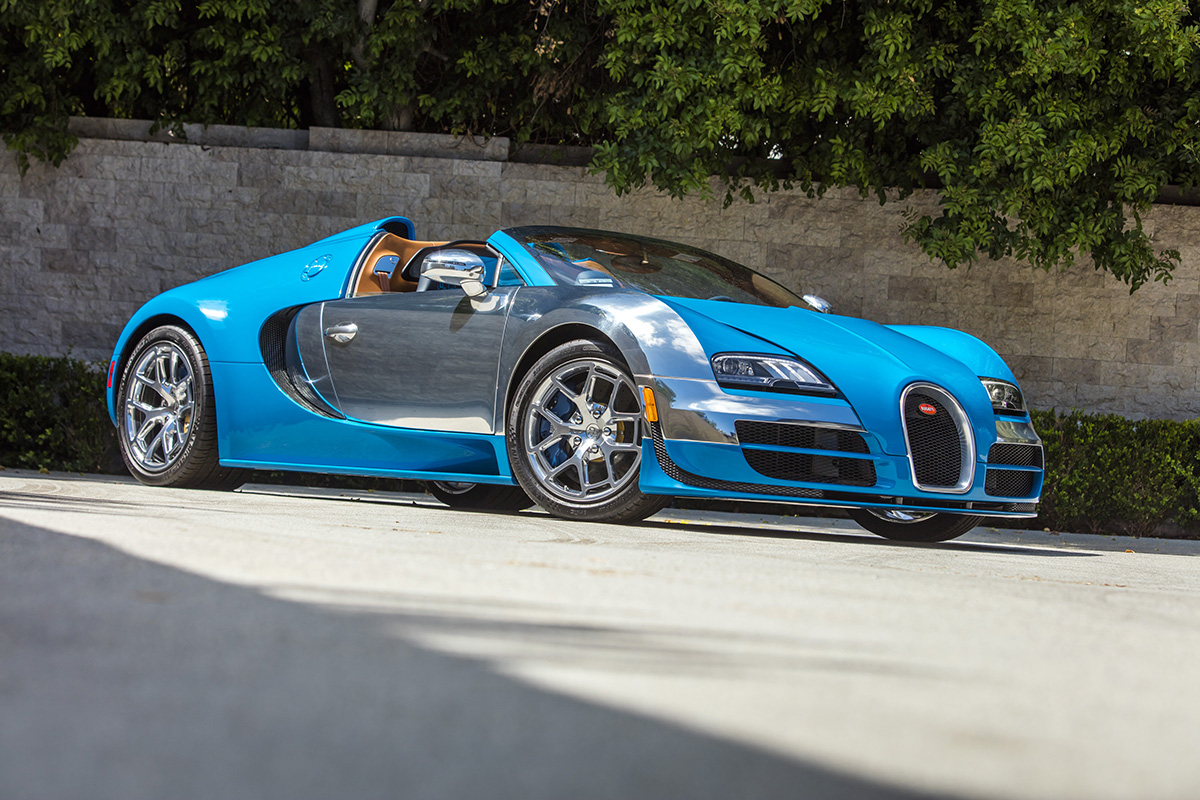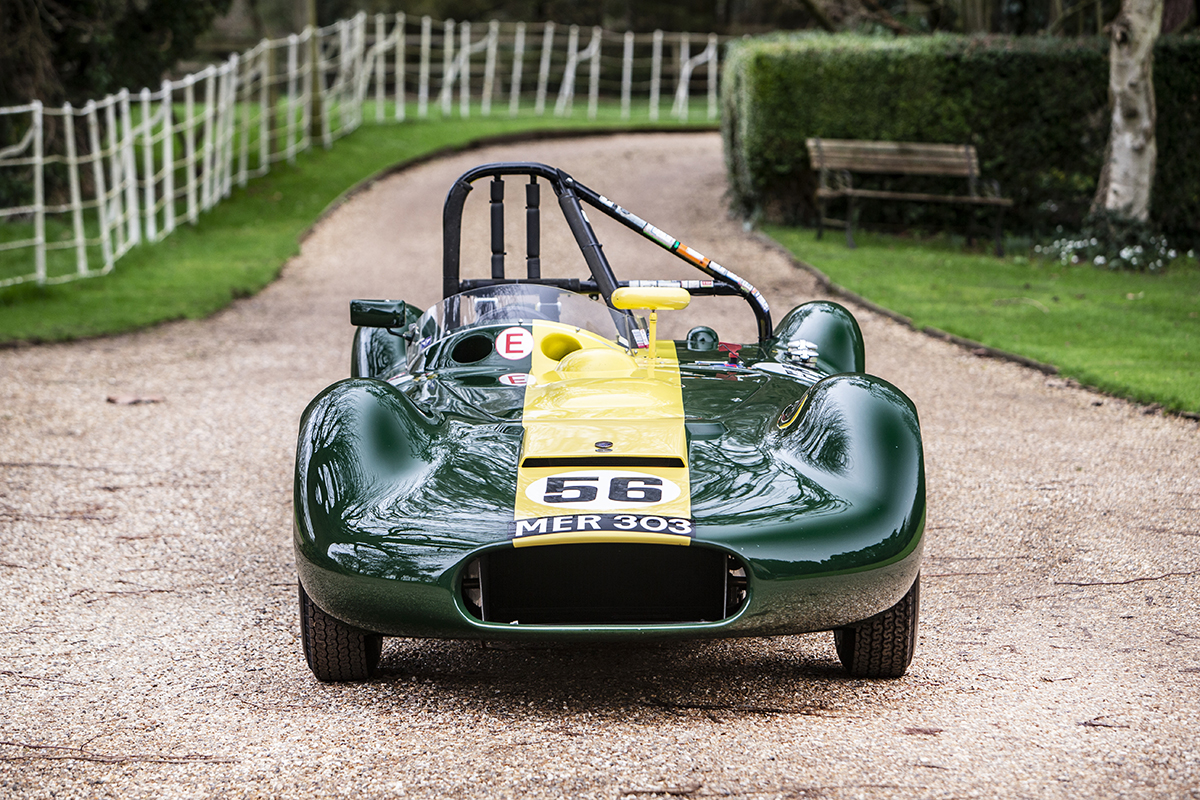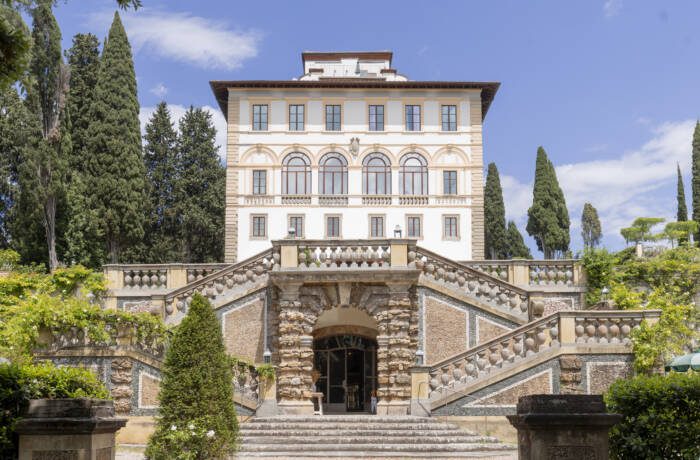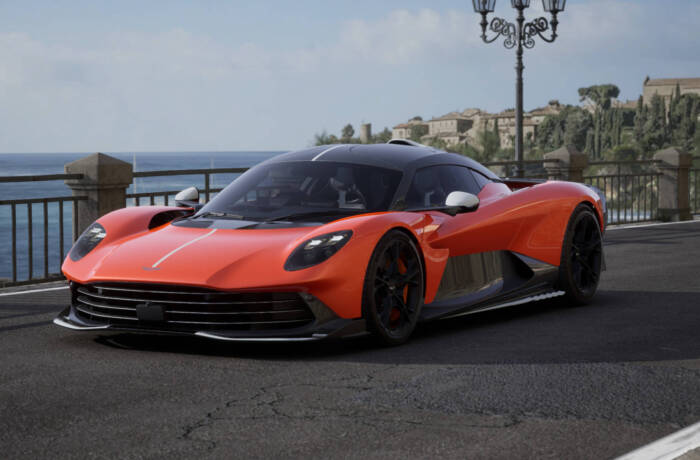
This 1995 Ferrari F512M Coupé will be on sale at the Bonhams auction in Zoute, Belgium on October 11
Modern classic cars, desirable machines from the 1980s onwards, are hotter than ever, with demand not damped by the pandemic or constraints against driving. So for that reason, LUX Editor-in-Chief Darius Sanai says he is reluctantly putting his beloved Ferrari F512M, one of the craziest Ferraris of them all, up at auction with Bonhams
The economic ramifications of the coronavirus across the upper echelons of the collecting market have been unpredictable. Walking home from an emptying office at the start of the lockdown in London in March, I bumped into a gallerist friend, who was in the process of locking up the doors of his famous gallery in Mayfair for a potentially indefinite period. What did he think would happen in the art market, I asked him (this was a time when I naïvely believed that people would knew the answers to questions like this). “Carnage!” he said.
Follow LUX on Instagram: luxthemagazine
Last week I was having a drink with another friend, one of the most significant collectors of contemporary art in Britain, and a good client of the same gallerist. My friend was bemoaning the state of his investments – not his stock market investments, which were doing very well, but the companies and people he has invested in directly. The companies are in the hospitality and retail sector, and having to let good people whom he knew and liked go was was eating him up, giving him sleepless nights, he looked drawn, despite his fitness regime and wealth. And how was the art market, I ventured, expecting more sharp intakes of breath, and of single malt. “Brilliant! I’m selling, and the prices are amazing!”

2014 Bugatti Veyron 16.4 Grand Sport Vitesse sold for $1,750,000 at the Quail Motor Car Auction in August.
My friend’s observation was evidently a reflection of the specialised part of the top end of the market in which he is selling – abstract expressionism. The art world itself has been hit severely by lockdown. According to one survey, by UBS and Art Basel, art gallery sales fell by 36% in the first half of the year – although falling sales do not equate to falling prices for the most desirable works.
Another part of the collectibles market that could logically have been expected to collapse during the last ten months, but which has not, is that of classic cars. The sector has even more going against it than the art world at the moment. Announcements by governments that the sale of new fossil fuel cars will be banned during ever shorter time spans; ever stricter restrictions on driving in cities; coronavirus-induced road changes in favour of cycles and pedestrians.

1956 Lister-Maserati 2.0-Litre Sports-Racing Two-Seater sold by Bonhams for £575,000.
And unlike collectors of Rothkos, the classic car market is not restricted to ultra high net worth individuals who have seen the size of their wealth increase during coronavirus due to a boom in the stock market. Classic cars encompass everything from £5000 MGs to £50m Ferrari GTOs. And the different segments of this market, while separate, are not hermetically sealed. If the price of a Ferrari Daytona drops, then a Ferrari 355, at a tenth of the price, also tends to drop. Yet, despite everything, the classic car market has been doing well across some of its tiers.
Read more: British artist Marc Quinn on history in the making
“Despite the challenging circumstance, the collectors’ car market has fared better than other sectors,” says James Knight, Executive Director at auction house Bonhams. “Although some sellers were initially concerned that the timing was right for selling a valuable collectors’ motor car, our (online live auction) system has been successful. We have sold cars and have sold them well – many at pre-COVID level prices. This success has given others confidence and we’re seeing healthy volumes come to market and being sold for market-correct prices.”
Knight says the market has been doing particularly well in the “hot” area of modern classics, cars desired by the latest generation of collector. “We are seeing a trend towards more modern classics and supercars becoming ever more popular. The demographic of buyers is changing – younger buyers are entering the classic market and they are looking at the ‘poster’ cars of the 1980s, 90s and even of this century.”

The Ferrari F512M had the final development of Ferrari’s famous “Flat V12” engine.
So, with this in mind, I have entrusted my beloved “modern classic” Ferrari F512M for sale at Bonhams auction in the swanky silver seaside resort of Zoute in Belgium on October 11.
After I bought it, in 2015, and drove it across southern England for the first time, I saw it as the last car in my small collection that I would sell. The F512M has all the elements of a true collectable. It is rare: only 500 were made, in 1994 and 1995. It looks striking, with the celebrated cats claw scratches down the sides, and a wide, flat rear straight out of an arcade game. It is the ultimate iteration, and technical pinnacle, of a famous model: the Testarossa, which was launched in a nightclub in Paris in 1984.
Read more: Four leading designers on the future of design
The Testarossa (Redhead) gained fame in Miami Vice, and was improved into the 512TR in 1991. Three years later, this evolved into my car, the F512M (“M” standing for “Modified” in Ferrari-speak). As well as a modernised front and rear (which does divide opinion – some found the original rear treatment more classic), it was the pinnacle of development of Ferrari engine and suspension of its time. The engine’s internal parts were made lighter by the use of rare metals, the suspension was modified for even racier handling, and the car in general was given the performance needed to be at the top of the Ferrari tree in the mid 1990s. The F512M was the fastest road car in the world, until the appearance of the special edition Ferrari F50, costing a multiple of the price, in 1996.
It is a quite astonishing thing to drive. The F512M has no power steering, And while it is a lighter car than its replacement, the 550 Maranello, it does as a consequence need quite an effort to haul it around corners in town. The flipside is there is nothing interfering with the communication of the road surface to your fingers, when you get out on to faster roads and the steering becomes both manageable and responsive. Power-assisted steering systems, and particularly the latest electronic power assisted systems, cannot compete in terms of pure road feel. And the F512M’s manual gearbox (newer Ferraris have the easier-but-less-exciting paddleshift) is such a thing that a senior Ferrari executive drove my F512M and tweeted about it in delight.


Bonhams director James Knight says this particular example has the “holy trinity” of superb condition, perfect provenance and low mileage.
The subsequent 550, and later V12 Ferraris, were tuned more towards comfort and cruising, attracting a broader selection of buyers than the hardcore purchasers of a F512M. And the focussed and rare nature of the 512 is reflected in its price: good examples retail for two to three times the price of its more modern, comfortable 550 Maranello successor. Indeed, the F512M is the the last of a monstrous line that began with the 365 Berlinetta boxer in 1973, a family of Ferraris with a 12 cylinder engine placed not under the bonnet, but right behind the driver and passenger’s head. The sound, from centimetres away from your ears, when accelerating at full spate, is quite frightening – as if you are inside the jaws of a ravenous Tyrannosaurus Rex.
There is something else quite special about the F512M. Every Ferrari made afterwards was equipped with safety devices like stability and traction control, which meant that if you were about to lose control of the car by accelerating too fast around a corner, the car would notice, and stop you from doing so, electronically.

The F512M being sold by our Editor-in-Chief was previously owned by one of Spain’s most prominent collectors, who kept it alongside the rest of his Ferrari collection in a heated underground garage. When we bought it, we put it though Ferrari’s official 101 point Approved car check, which it passed with flying colours
Not only does the F512M not have any kind of safety control “nanny”: it is also the most powerful-ever general production Ferrari with a V12 engine placed behind the driver. On the one hand, this means for thrilling handling: turn the feelsome steering wheel, and there is no engine weight over the front wheels to create inertia by creating momentum through its mass and resist the turn. It just turns.
The corollary of this is that when the back of the car also turns, a nanosecond later, the mass of the engine turns with it, and if you get your cornering wrong, will wish to continue turning, American-cop-car-in-street-chase-style, until you go round in a circle. Keeping this under control at high speed would be both a challenge and a delight – although to be fair, the advanced suspension and huge rear tyres mean breaking traction only really happens when you want it to. I’ve never done it.
Read more: How Chelsea Barracks is celebrating contemporary British craft
So why am I selling it? Firstly, I simply do not have the opportunity to take it out onto the road where it can be driven properly. This is a car that needs to be driven from London to Tuscany at high speed. I barely have time on a weekend to get from London to Oxford.
Also, in the little leisure driving time I have, I have become an increasing cultural fascist about convertibles. I believe cars with open tops are right, and everything else is wrong. Or something like that.

1959 Porsche 718 RSK Spyder, sold for $2,232,500 at Bonhams Quail Motorcar Auction in August.
Sadly, they did not make an open top version of the F512M. So, I want to sell it and put the money towards an open-topped V12 Ferrari. You will find full details of my magnificent F512M, which I purchased from one of the most prominent collectors in Spain, here.
As Knight himself says about this car: “The Testarossa is one of the modern Ferrari icons and the F512M was the final and the rarest version with just 501 examples produced. This is a very special motor car as it represents the ‘holy trinity’. It is offered in superb condition, having been exceptionally well-cared for; it has covered fewer than 20,000 kms and has the all-important provenance, which includes full Ferrari service history.”
If you’re the lucky buyer, please promise me a ride. I will miss her. And meanwhile, long may the market for collectibles thrive – after all, driving a two-seater Ferrari, you and your passenger are in glorious self-isolation as you hurtle towards your destination, enjoying every second.
For more information visit: bonhams.com








